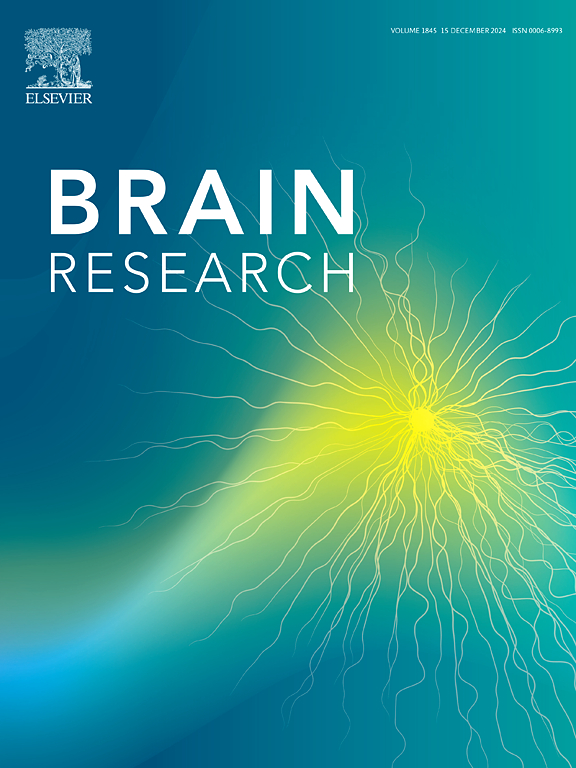Temporal brain network analysis of cognitive reappraisal and expressive suppression based on dynamic functional connectivity
IF 2.7
4区 医学
Q3 NEUROSCIENCES
引用次数: 0
Abstract
Functional brain networks must undergo dynamic reorganization within brief time intervals to effectively process and respond to affective stimuli. The traditional static network method only could reflect the whole brain activity on an independent time scale. Based on the emerging temporal brain network analysis framework, the current study explored the difference between cognitive reappraisal and expressive suppression in the reorganization of dynamic functional connectivity. Temporal brain network in the gamma band was estimated using the sliding window method and the phase lag index to quantitatively compare the differences between cognitive reappraisal and expressive suppression. The results showed that the regulative effect of cognitive reappraisal was better than that of negative viewing and expressive suppression. In the global temporal brain networks, temporal clustering coefficients of cognitive reappraisal was increased compared with expressive suppression. The frontal and parietal lobes were essential for the process of emotion regulation, and the difference of nodal temporal betweenness centrality between the two strategies was mainly concentrated in the frontal and parietal lobes. The spatiotemporal topological network of dynamic functional connectivity for cognitive reappraisal was significantly segregated, and the frontal and parietal lobes region revealed the different performance of the two strategies at the nodal level.

基于动态功能连接的认知重评价和表达抑制的颞叶脑网络分析。
功能性脑网络必须在短时间内进行动态重组,才能有效地处理和响应情感刺激。传统的静态网络方法只能在一个独立的时间尺度上反映整个大脑的活动。本研究基于新兴的颞叶脑网络分析框架,探讨认知重评价与表达抑制在动态功能连接重组中的差异。采用滑动窗口法和相位滞后指数估计伽玛波段颞叶脑网络,定量比较认知重评和表达抑制的差异。结果表明,认知重评价的调节作用优于负性观察和表达抑制。在颞叶脑网络中,认知重评价的时间聚类系数比表达抑制高。额叶和顶叶在情绪调节过程中起着至关重要的作用,两种策略的节间性中心性差异主要集中在额叶。认知重评动态功能连接的时空拓扑网络明显分离,额叶区域在节点水平上显示了两种策略的不同表现。
本文章由计算机程序翻译,如有差异,请以英文原文为准。
求助全文
约1分钟内获得全文
求助全文
来源期刊

Brain Research
医学-神经科学
CiteScore
5.90
自引率
3.40%
发文量
268
审稿时长
47 days
期刊介绍:
An international multidisciplinary journal devoted to fundamental research in the brain sciences.
Brain Research publishes papers reporting interdisciplinary investigations of nervous system structure and function that are of general interest to the international community of neuroscientists. As is evident from the journals name, its scope is broad, ranging from cellular and molecular studies through systems neuroscience, cognition and disease. Invited reviews are also published; suggestions for and inquiries about potential reviews are welcomed.
With the appearance of the final issue of the 2011 subscription, Vol. 67/1-2 (24 June 2011), Brain Research Reviews has ceased publication as a distinct journal separate from Brain Research. Review articles accepted for Brain Research are now published in that journal.
 求助内容:
求助内容: 应助结果提醒方式:
应助结果提醒方式:


